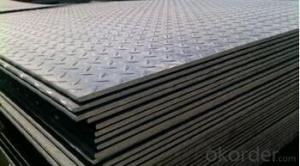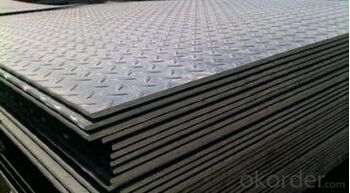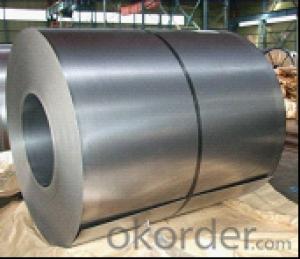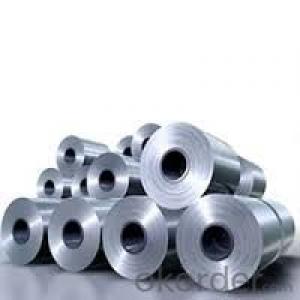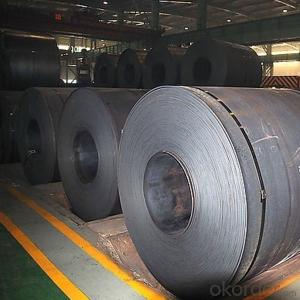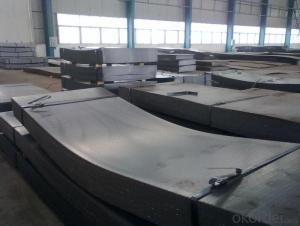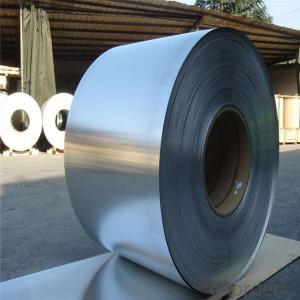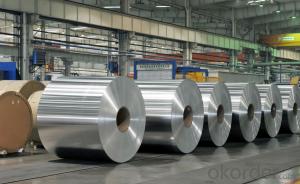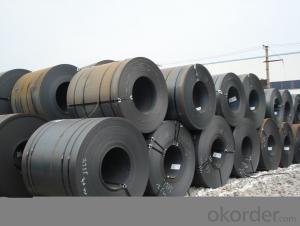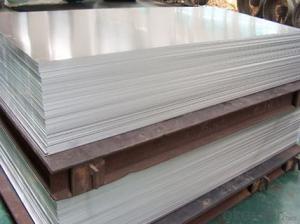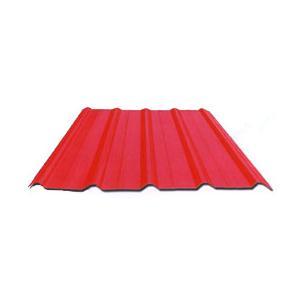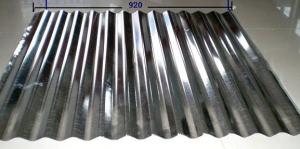Hot Rolled checkered plate Coils/Sheets Q235/SS400/ST 37-2
- Loading Port:
- Tianjin
- Payment Terms:
- TT OR LC
- Min Order Qty:
- 25 m.t.
- Supply Capability:
- 200000 m.t./month
OKorder Service Pledge
OKorder Financial Service
You Might Also Like
Product: | Hot Rolled Steel Coils/Sheets |
Material: | Q195,Q235,A36,SS400,S235JR,Q345,ST37-2, CCSB etc |
Standard : | JIS G3002 GB/T251B |
Technique: | hot rolled |
Thickness | 1.2mm to 200mm |
Tolerance of thickness: | :+/-0.03mm |
Width: | 750mm-2000mm |
Tolerance of width: | :+/-5.00mm (aiming to +/-2.00mm) |
Normal width: | 914mm, 1000mm, 1200mm, 1219mm, 1250mm,1500mm |
Length: | According to requirement |
Coil ID: | 508mm-610mm |
Coil Weight: | 10-25 Metric Tons |
Surface: | Black, Chromate, fingerprint resistant treatment, slight oiled or non-oiled, dry |
Port of Loading: | Tianjin/Shanghai port |
Packaging Details: | Standard export packing or according to the clients required |
Delivery Time | Within 30 days after received 30% deposit or workable L/C |
Payment Terms: | L/C,T/T |
- Q: What is the average fire rating for steel sheets?
- The average fire rating for steel sheets can vary depending on the specific type and thickness of the steel, as well as any additional fireproofing measures applied. However, in general, steel sheets typically have a fire rating of around 30 to 60 minutes.
- Q: What is the typical price range for steel sheets?
- The price of steel sheets can fluctuate based on multiple factors, including the type and grade of steel, the thickness and size of the sheets, and the prevailing market conditions. Typically, the price range for steel sheets can vary from approximately $30 to $200 per sheet. Nevertheless, it is crucial to bear in mind that these figures are only approximate and can experience substantial fluctuations. To obtain the most precise and current pricing details for steel sheets, it is strongly advised to consult local suppliers or manufacturers.
- Q: How do you measure the thickness of steel sheets?
- The thickness of steel sheets can be measured using a tool called a micrometer or a caliper. These tools have a measuring scale or a digital display that allows you to accurately determine the thickness of the steel sheet by placing the tool on top of it and closing the jaws until they firmly grip the sheet. The measurement displayed on the tool will indicate the thickness of the steel sheet in millimeters or inches.
- Q: Are steel sheets non-magnetic?
- Steel sheets are not necessarily non-magnetic. Their magnetic properties are contingent upon the composition and processing of the steel. Various types of steel, like austenitic stainless steel, lack magnetism, whereas ferritic and martensitic stainless steel can possess it. Additionally, external factors like temperature and magnetic fields can impact the magnetism of steel sheets. Thus, it is crucial to assess the type and characteristics of the steel sheet to ascertain its magnetic behavior.
- Q: What is the minimum order quantity for the steel sheets?
- The minimum order quantity for the steel sheets is 100 units.
- Q: What is the process of embossing on steel sheets?
- The process of embossing on steel sheets involves creating raised or recessed designs on the surface of the steel. This technique is commonly used to add texture, improve aesthetics, or enhance the mechanical properties of the steel. The first step in the embossing process is preparing the steel sheets. This typically involves cleaning the surface to remove any dirt, oils, or coatings that may interfere with the embossing process. The steel sheets are then carefully inspected for any imperfections or surface defects that could affect the embossing quality. Once the steel sheets are prepared, they are placed in an embossing machine, which consists of two or more rollers. These rollers have engraved patterns on their surfaces, which will be transferred onto the steel sheets. The rollers are typically made of hardened steel or other materials that are resistant to wear and tear. As the steel sheets pass through the embossing machine, pressure is applied to the rollers, causing them to press against the steel surface. This pressure creates a plastic deformation in the sheet, resulting in the desired raised or recessed pattern. The depth and intensity of the embossing can be adjusted by controlling the pressure applied by the rollers. In some cases, heat may be applied during the embossing process to soften the steel sheets and make them more malleable. This allows for deeper and more intricate embossing patterns to be achieved. The temperature and duration of the heating process will depend on the specific type of steel being used and the desired outcome. After the embossing process is complete, the steel sheets may undergo additional treatments such as cleaning, coating, or polishing to further enhance their appearance and protect them from corrosion. These finishing steps help to ensure that the embossed steel sheets meet the desired quality standards and are ready for their intended application. Overall, the process of embossing on steel sheets is a versatile and effective way to add texture and visual interest to the surface of the steel. It requires careful preparation, precision machinery, and skilled operators to achieve consistent and high-quality results.
- Q: What is the average lead time for ordering steel sheets?
- The lead time for ordering steel sheets can vary due to different factors, including the supplier, required quantity, customization needs, and current market conditions. Typically, the lead time ranges from a few days to several weeks. If the supplier has the steel sheets in stock, the lead time can be as short as a few days or less, ensuring prompt order fulfillment. However, if the sheets need to be obtained from a specific mill or manufacturer, the lead time may be longer. This is particularly true for orders with custom specifications, such as specific dimensions, finishes, or steel grades. Other factors that impact lead time include the supplier's production capacity and workload, transportation and logistics considerations, and potential delays resulting from unexpected events like natural disasters or labor disputes. To obtain accurate lead time estimates, it is crucial to communicate with the supplier or manufacturer. They can provide specific information based on their production capabilities and current circumstances. Moreover, it is advisable to plan ahead and allow for some buffer time to accommodate potential delays or unforeseen challenges during the ordering process.
- Q: What are the different testing methods for steel sheets?
- There are several testing methods used for steel sheets, including tensile testing, hardness testing, impact testing, bend testing, and thickness measurement. Each method serves a specific purpose in evaluating the quality and properties of steel sheets.
- Q: Can steel sheets be customized according to specific requirements?
- Yes, steel sheets can be customized to meet specific requirements.
- Q: Are steel sheets suitable for water tanks or reservoirs?
- Yes, steel sheets are suitable for water tanks or reservoirs. Steel is a durable material that can withstand the pressure and weight of water, making it a reliable choice for constructing tanks or reservoirs. Additionally, steel sheets can be coated or treated to prevent corrosion and ensure the water remains clean and safe for consumption.
Send your message to us
Hot Rolled checkered plate Coils/Sheets Q235/SS400/ST 37-2
- Loading Port:
- Tianjin
- Payment Terms:
- TT OR LC
- Min Order Qty:
- 25 m.t.
- Supply Capability:
- 200000 m.t./month
OKorder Service Pledge
OKorder Financial Service
Similar products
Hot products
Hot Searches
Related keywords
